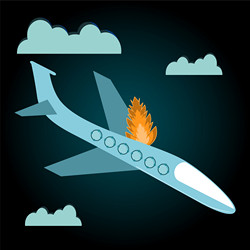New studies on composite materials help improve aircraft safety
Polymer composites being used to build the latest aircraft are contributing to significant weight reduction and energy savings. With composites rapidly replacing aluminium aircraft bodies, the aerospace industry wants to ensure that these new materials are as resistant as possible to fire hazards before, during and after a flight. This was the aim of the EU-funded AIRCRAFTFIRE (Fire risks assessment and increase of passenger survivability) project. To begin with, the project team built a comprehensive experimental database on the flammability, burning, toxicity and smoke formation of the composites. With respect to detecting fires in flight, the team helped define the specificities of composite burning in order to facilitate detection using sophisticated new sensors. It also studied how fires spread in order to evaluate containment and propagation of the fire within the cockpit and cabin. An equality important project milestone involved investigating fires after a crash. In this respect the team conducted a full structural analysis of a composite aircraft in a crash scenario to define its condition before a fire could begin. This required igniting a kerosene fire to assess how the flames spread in order to record chemical and thermal impacts. Coupled with an in-depth study of fire scenarios, the data obtained from the experiments on the new composites has enabled researchers to improve current modelling software for evacuation and for the spread of fire. The software can now simulate a complete fire from its very onset, as well as the impact on passengers and their ability to evacuate after a crash. Several key results emerged from the project's research. For example, without post-crash fuselage rupture, the composite fuselage offers superior fire protection and improved evacuation than the aluminium fuselage. However, in certain cases the composite parts in the rear could release toxic fumes into the cabin, calling for improvements in such circumstances. The project's outcomes and recommendations have been disseminated to manufacturers and the regulatory agency to support better aircraft design and enhance fire safety without compromising performance. Yet another initiative brings us closer to safer skies and air travel in Europe.







